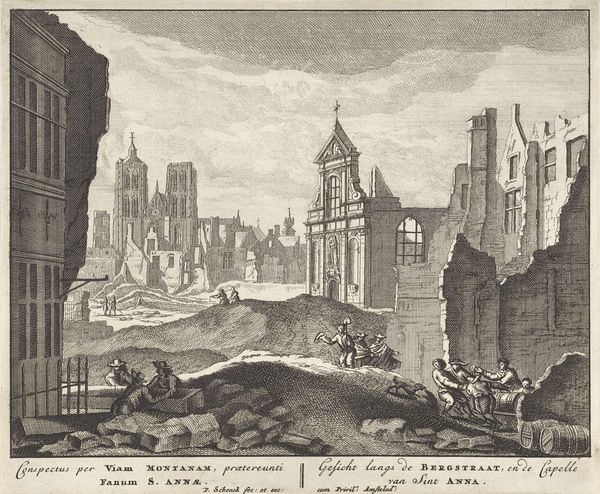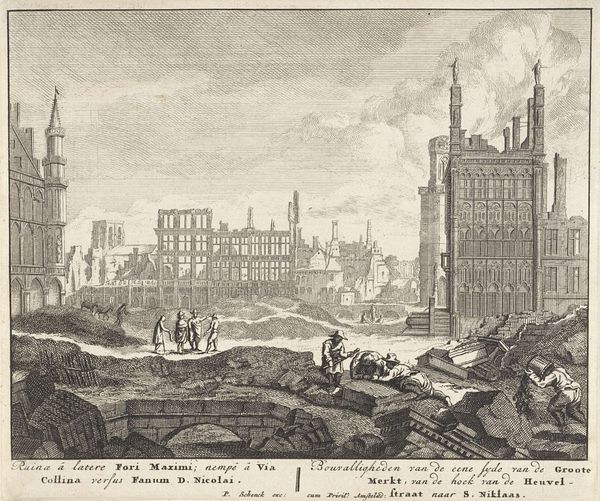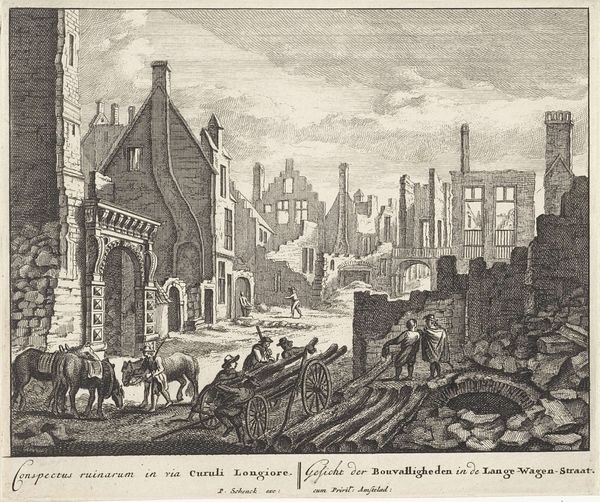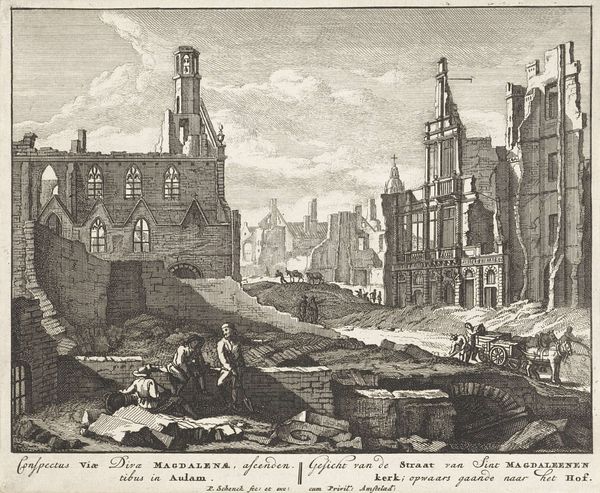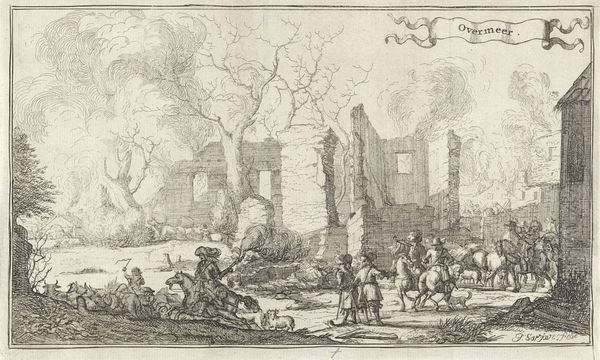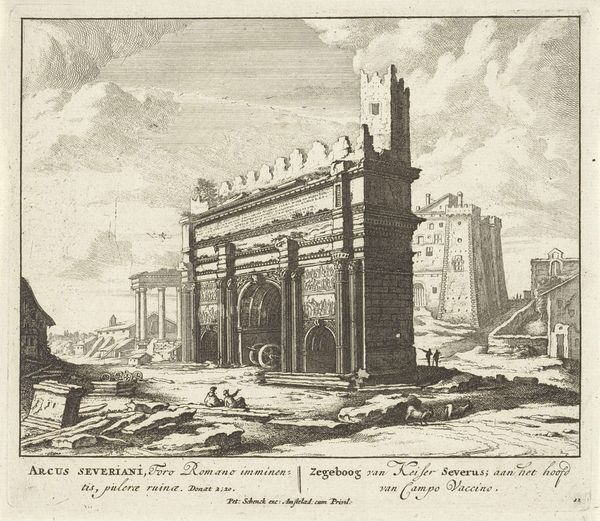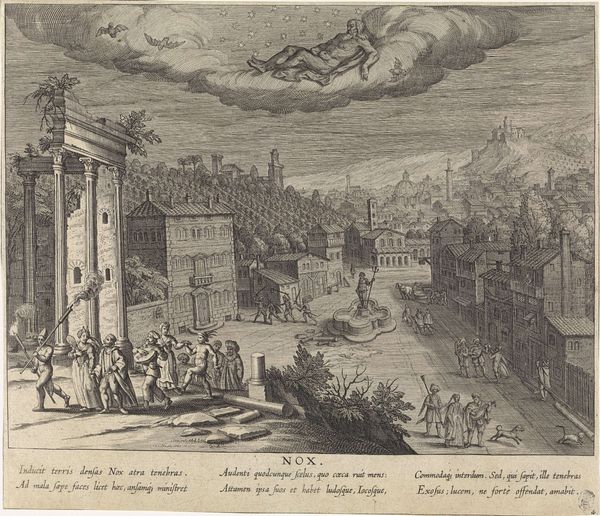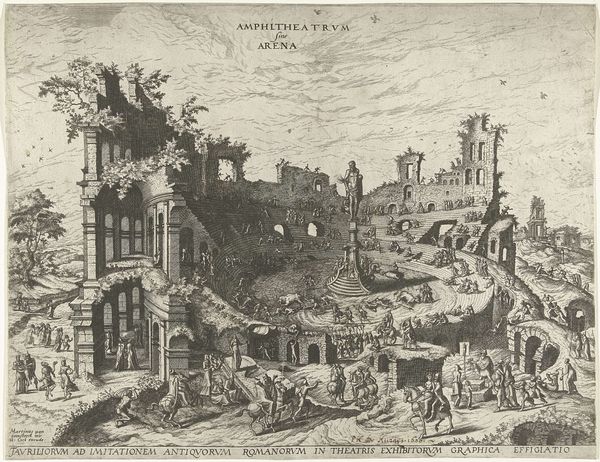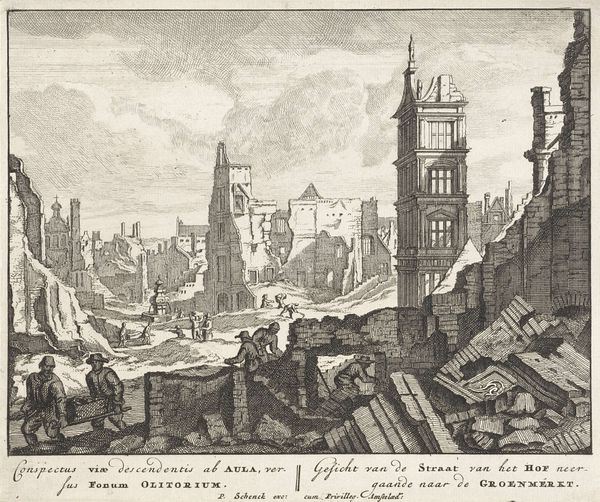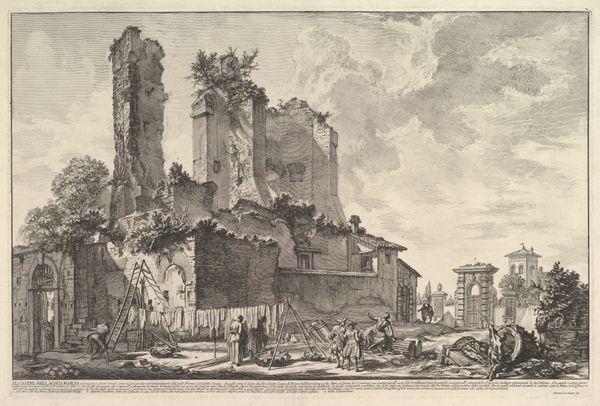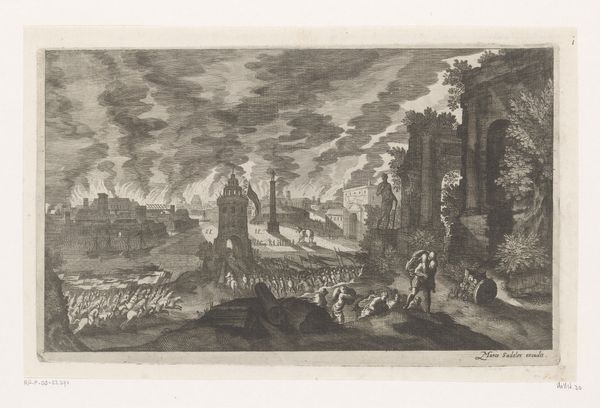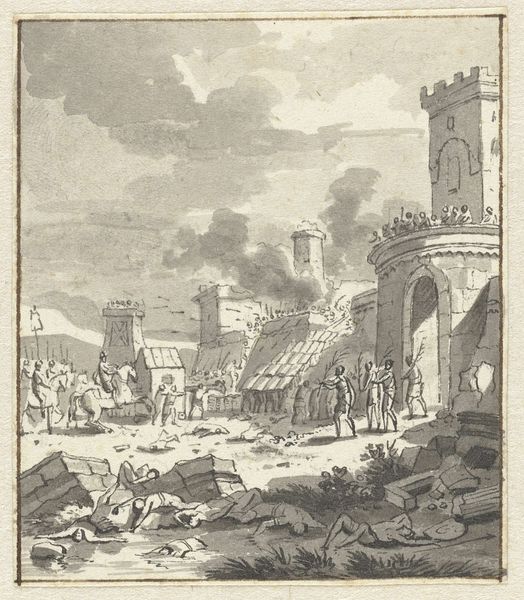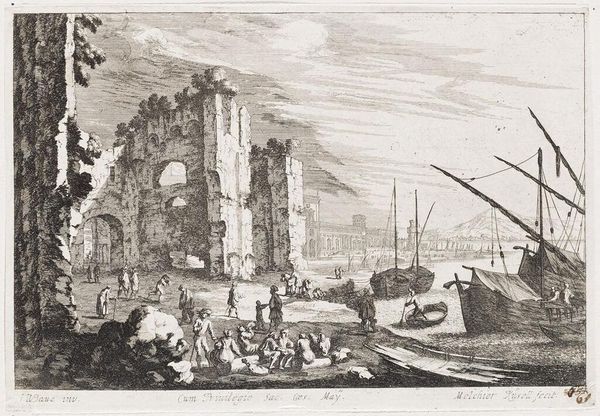
print, etching, engraving, architecture
#
baroque
# print
#
etching
#
old engraving style
#
landscape
#
cityscape
#
history-painting
#
engraving
#
architecture
Dimensions: height 166 mm, width 196 mm
Copyright: Rijks Museum: Open Domain
Editor: Here we have Pieter Schenk’s “Ruins in the Beenhouwersstraat in Brussels, 1695,” an etching and engraving. It's incredibly detailed. What immediately strikes me is the contrast between the ruined buildings and the figures in the foreground, seemingly going about their daily lives amidst the devastation. What’s your interpretation? Curator: Indeed, it's a potent image. Consider the socio-political context. This work likely depicts the aftermath of the bombardment of Brussels by French troops in 1695. Schenk wasn’t merely recording destruction; he was presenting a particular view of it for public consumption. How do you think he framed the imagery to reflect, or perhaps influence, public sentiment? Editor: Well, seeing people at work amongst the rubble suggests resilience. Maybe Schenk aimed to inspire a sense of rebuilding and recovery after the devastation? Curator: Precisely. This image also participated in shaping historical memory. Prints like these circulated widely, molding how future generations understood the events of 1695. Do you think the "objective" recording of ruins is truly objective? Editor: I guess not. The composition itself, like focusing on the foreground figures, guides the viewer's emotions, so it is impossible to document objectively. I learned the history behind this piece and it emphasizes how it plays in popular memory. Curator: And that interaction is shaped by artistic representation and consumption. I was happy to think about the artist and people living among these ruins together.
Comments
No comments
Be the first to comment and join the conversation on the ultimate creative platform.
